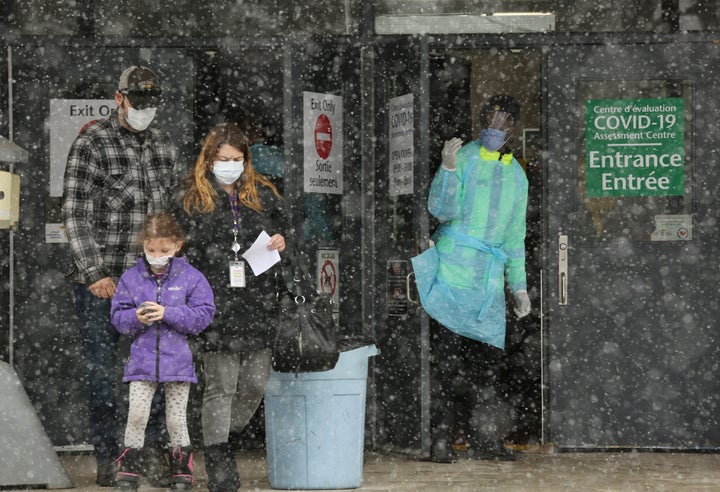TORONTO — Social distancing will “absolutely” save lives and could work in time to avoid overwhelming Ontario’s health-care system, according to one scientist who has been predicting potential COVID-19 pandemic outcomes.
“This weekend, early next week, we will hopefully see what the effect is from all the social distancing measures,” said Beate Sander, one of the Toronto scientists who has been publishing models to forecast how long it will take for Ontario to deplete its hospital capacity.
“That may just get us down enough to cope with everything.”
Sander is a University Health Network scientist, the Canada research chair in economics of infectious disease and an associate professor with the University of Toronto’s Dalla Lana School of Public Health.

She and a team of researchers have been modelling how long it could take for COVID-19 cases to overtake Ontario’s health-care system. There are 588 confirmed cases of the disease in the province as of Tuesday afternoon, up 17 per cent from Monday.
Last week, Sander’s team released modelling for a worst-case scenario based on what happened in Italy and a “conservative scenario” that was based on a much smaller number of cases. On Saturday, they updated their report to include scenarios that take social distancing measures into account.
“Modelling … is trying to recreate a simplified version of the real world,” she told HuffPost Canada. “It is kind of like playing SimCity.”
Sander said the most realistic scenario at this time is one that assumes the number of cases will rise 25 per cent a day for two weeks and then decrease about 11 per cent a day after social distancing.
In this scenario, more than 1,400 patients would need to be hospitalized in a ward bed at the pandemic’s peak and another nearly 1,200 would need an intensive care unit (ICU) bed.
“With the 25 per cent [increase], we found that we would potentially run out of ventilators and ICU beds at around 16 days and that lasts for about three weeks.”
Then cases will go down and we will have enough resources, Sander said.
“If a patient needs a ventilator or help to breathe and they don’t get it, they die.”
- Beate Sander
The 16 days are counted from mid-March. So in this scenario, Ontario would run out of ICU beds and ventilators in approximately one week.
“The ventilators are kind of the big thing. If a patient needs a ventilator or help to breathe and they don’t get it, they die,” Sander said.
Patients who need ICU care but not a ventilator would have worse outcomes and a lower chance at recovery, she said.
The model assumes that Ontario can free up 25 per cent of its estimated 2,000 ICU beds and 1,300 ventilators for patients with COVID-19. It does not take into account a stockpile of more than 200 ventilators the Toronto Star reports Ontario created after SARS or new hospital beds that the province is trying to create.
In a different model, which assumes cases rise 15 per cent a day until social distancing works, Sander and her colleagues found that Ontario’s resources would not be depleted.
“Then we would have enough resources to cope with this.”
75 new ICU beds coming
Ontario’s health minister has said the government is working to increase hospital capacity. When Premier Doug Ford announced hundreds of millions in funding to deal with COVID-19, he said that money would pay for 75 new critical care beds, 500 new post-acute care beds and 50 emergency physicians for rural, remote and Indigenous communities.
Ford has also said that auto manufacturers have offered to retool in order to create new ventilators.
Sander said new ventilators will only be helpful if there is an equal number of new ICU beds and qualified health-care workers who can care for critically ill patients.
“A full warehouse of ventilators is not going to do anything for us.”
She said her most important message for the public is to continue staying at home as much as possible and keep a physical distance from others.
“We need to keep going with physical distancing. Just buying ventilator machines is not going to save anyone. Physical distancing, to continue what we have been doing, is absolutely key.”

- What are the cases of the new coronavirus in Canada? Take a look at our map.
- Suddenly find yourself applying for EI? Here’s what you need to know.
- How to tell the difference between the coronavirus and the flu.
- “Flattening the curve” could help us all, and here’s why.
- Things are changing quickly: a cross-Canada look at which services are open and closed.